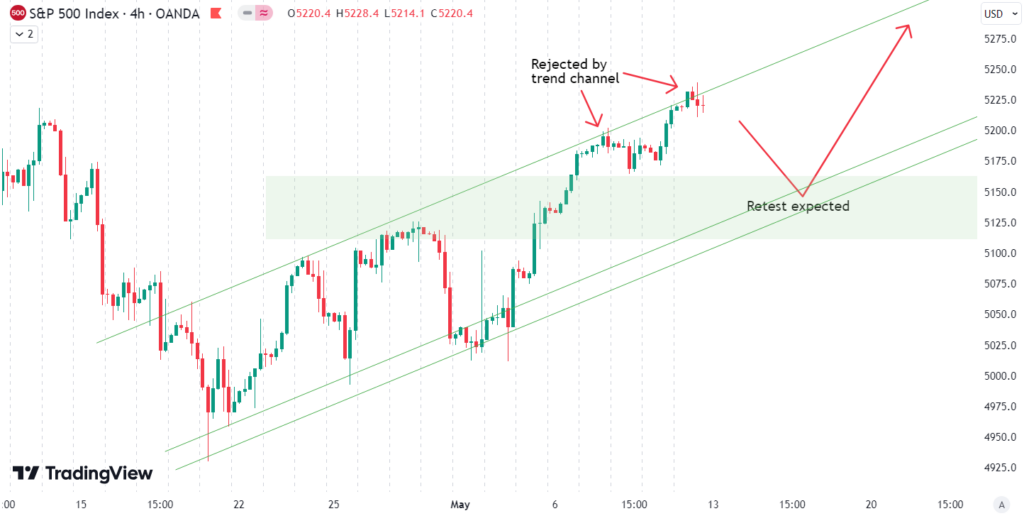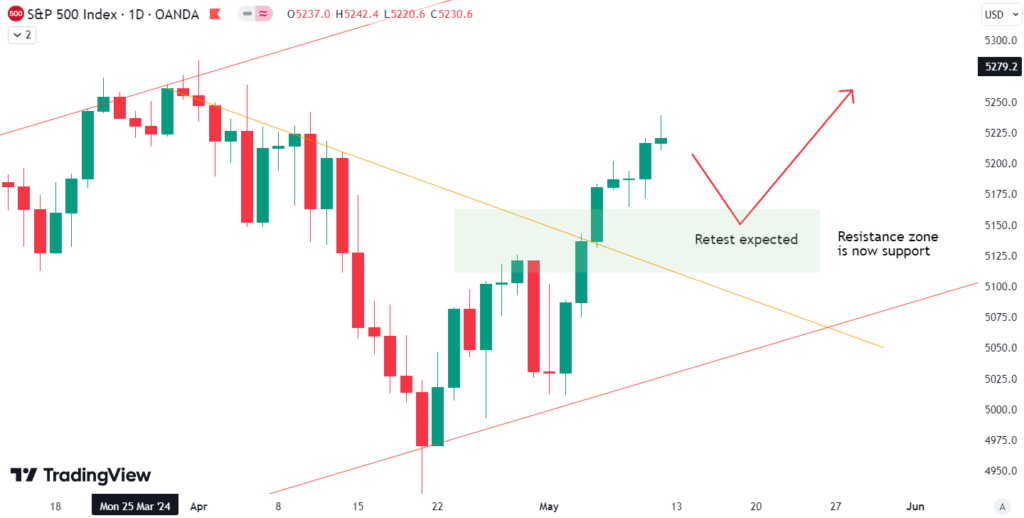This week saw the S&P 500 with a gain of 1.6%. Both Monday and Thursday stood out as particularly strong days, contributing significantly to the overall increase. Over the past three weeks, the S&P 500 has formed an uptrend channel (in green on the chart). Interestingly, this channel acted as a barrier, leading to rejections of the index on both Tuesday and Friday.

Our last position which we placed has been active since April 25th. The position is currently up by 9,8%.
When should you buy the S&P 500? If you are interested in receiving our completely free buy and sell signals via email, you can sign up for our email list below.
In our analysis last week, we highlighted the index’s ability to close the week at the resistance zone. However, this week saw a significant breakthrough, with the S&P 500 strongly surpassing the resistance zone and closing the week above it. The former resistance zone is now anticipated to act as support. Typically, in such scenarios, prices often retrace to retest the old resistance zone, confirming it as support before continuing their upward momentum. This potential retest may coincide with the lower boundary of the trend channel (green), further reinforcing the expected support level. Nevertheless, there’s a possibility that the retest fails, leading to further downward movement in prices. Conversely, there’s also the chance that no retest occurs, and the index proceeds to establish new all-time highs. Should a retest of the support zone materialize, investors may consider increasing exposure to equities and other risk assets.

The next few months
The seasonality for the S&P 500 in an election year anticipates a period of weakness in May, followed by a robust uptrend until early September. Subsequently, there’s often a more substantial correction leading up to the election in early November. While it may be that the correction in May may have concluded, and we may now be on an upward trajectory until September, it’s essential to approach the seasonality data cautiously. This year, in particular, demands careful consideration due to the substantial price rise already observed.

The macroeconomic environment is showing negative signs, with our Risk Level Indicator (RLI) increasingly confirming this outlook through various signals. The risk of a credit event remains elevated, adding to the prevailing economic concerns. Of particular note is the Federal Reserve’s Bank Term Funding Program (BTFP), which was initiated in response to last year’s banking crisis to aid banks struggling with high interest rates. However, this program has now expired, and banks are required to gradually repay the loans to the Fed over the course of a year. The RLI will promptly identify emerging issues and adjust the risk level accordingly, providing valuable insights for investors. Currently, a somewhat defensive allocation in stocks is advisable, given the uncertain economic climate.
If you’re interested in receiving our free trading signals and articles like the one you just read via email, you can register here.
The world of finance is complex and includes many technical terms. For explanations of these terms, I recommend using the Investopedia dictionary.

Leave a Reply